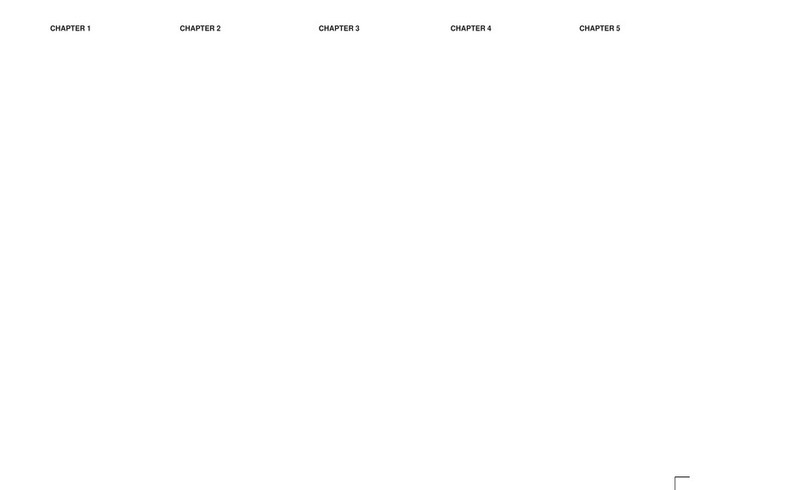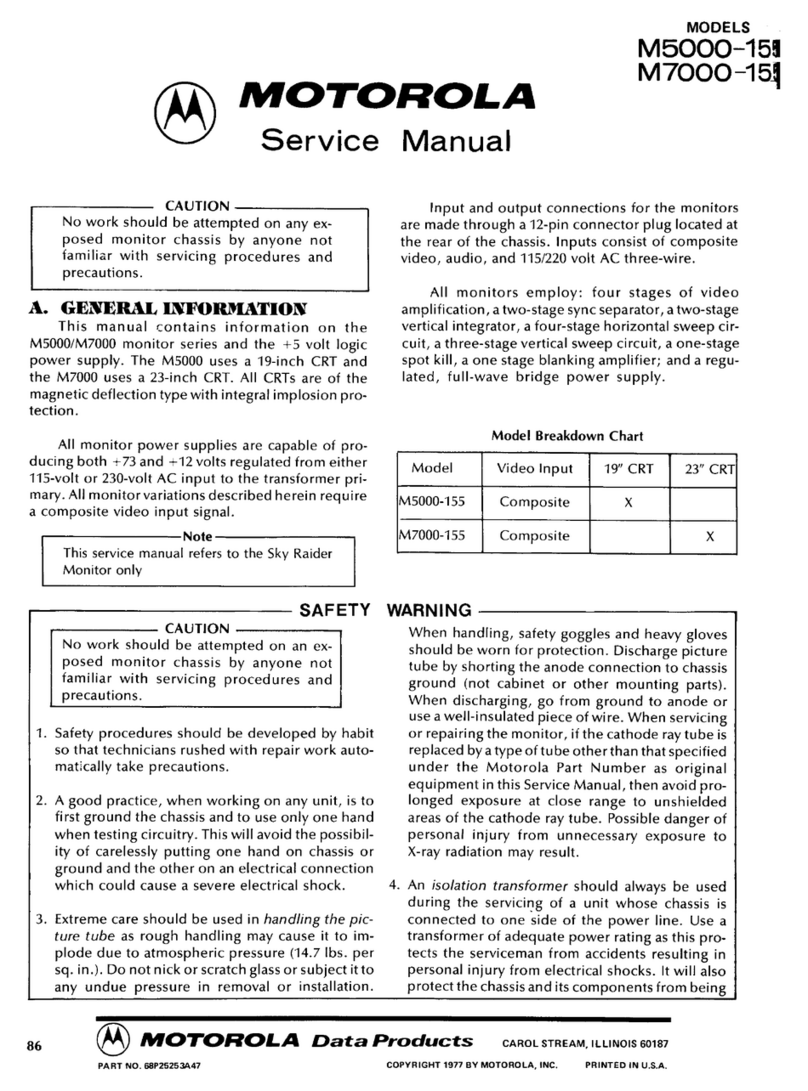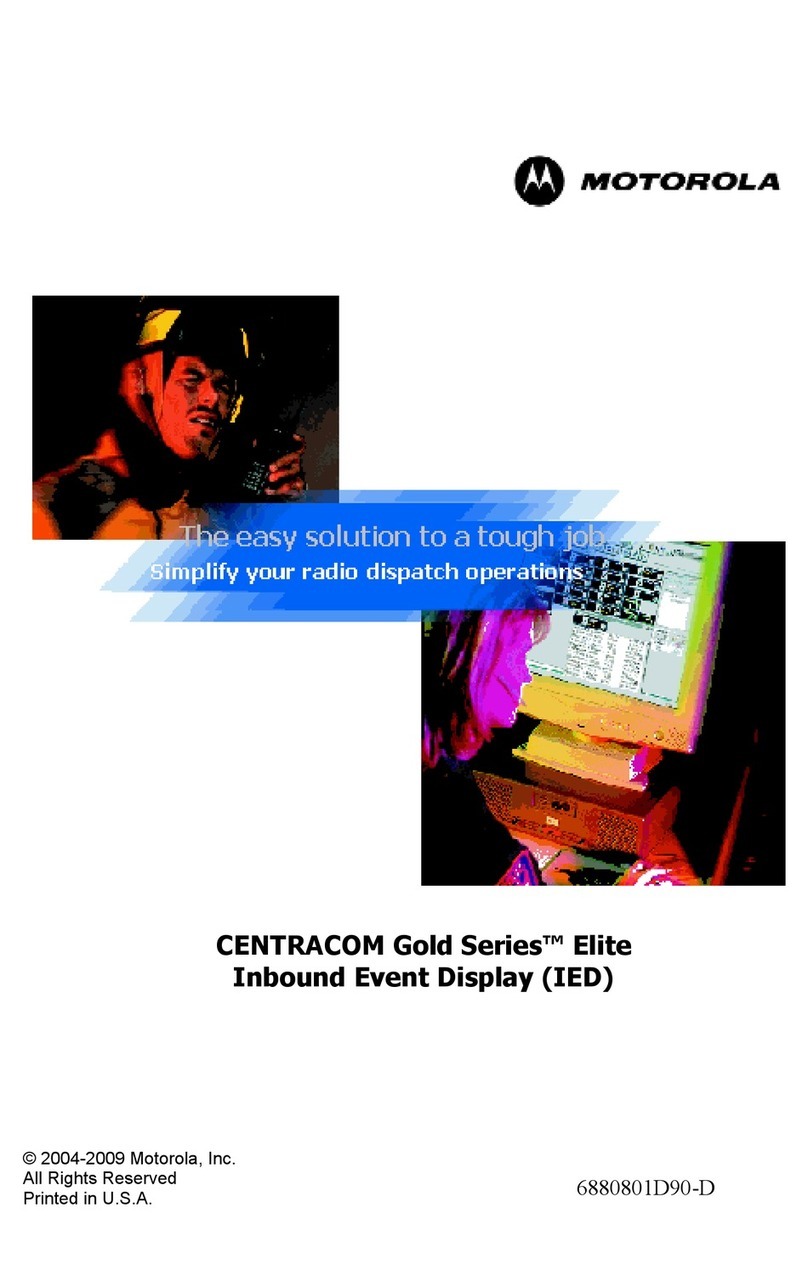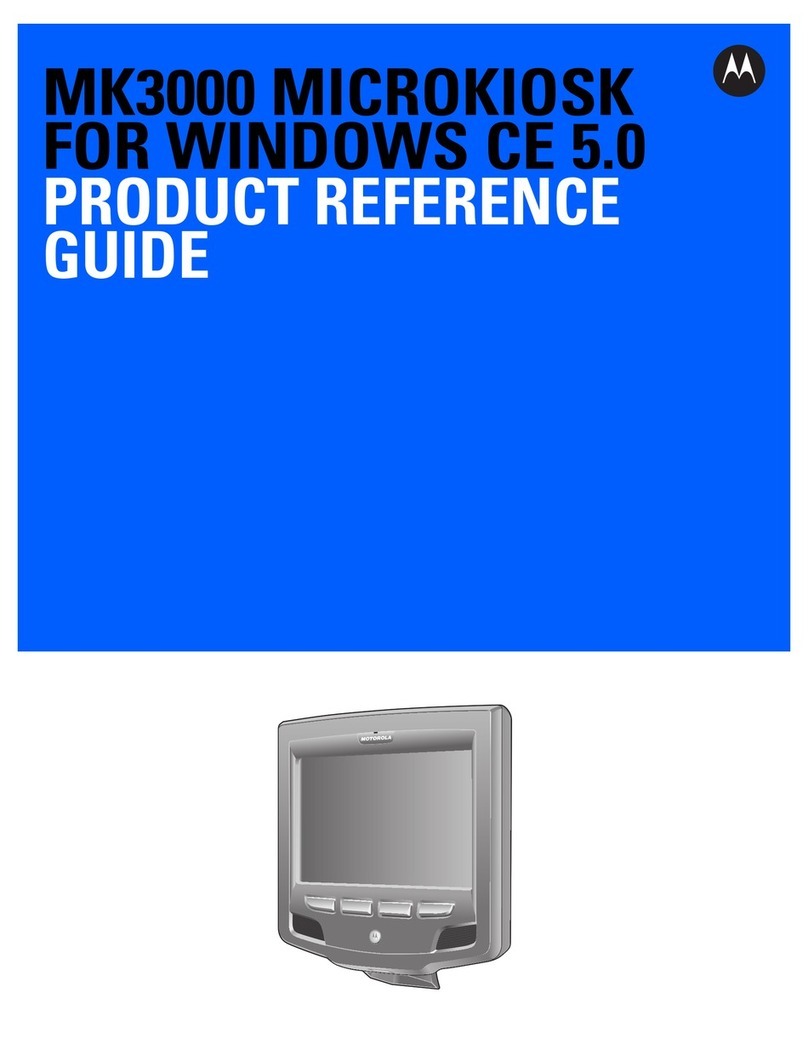''o'noFlro,',/l tuc..
Communicafions
Sector SAFE HANDLING OF CMOS
INTEGRATED CIRCT]IT DEVICES
Many of the integrated circuit devices used in com-
munications equipment are of the CMOS (Complemen-
tary Metal Oxide Semiconductor) type. Because of their
high open circuit impedance, CMOS ICs are vulnerable
to damage from static charges. Care must be taken in
handlitrg, shipping, and servicing them and the
assemblies in which they are used.
Even though protection devices are provided in
CMOS IC inputs, the protection is effective only against
overvoltage in the hundreds of volts range such as are
encountered in an operating system. In a system, circuit
elements distribute static charges and load the CMOS
circuits, decreasing the chance of damage. However,
CMOS circuits can be damaged by improper handling
of the modules even in a system.
To avoid damage to circuits, observe the following
handlitrg, shippitrg, and servicing precautions.
l. Prior to and while servicing a circuit module,
particularly after moving within the service area,
momentarily touch both hands to a bare metal earth
grounded surface. This will discharge any static charge
which may have accumulated on the person doing the
servicing.
NOTE
Wearing Conductive Wrist Strap
(Motorola No. RSX40I5A) will minimize
static buildup during servicing.
WARNING
When wearing Conductive Wrist Strap,
be careful near sources of high voltage.
The good ground provided by the wrist
strap will also increase the danger of
lethal shock from accidentially touching
high voltage sources.
2. Whenever possible, avoid touching any elec-
trically conductive parts of the circuit module with your
hands.
3. Normally, circuit modules can be inserted or
removed with power applied to the unit. However,
ChCCK thc INSTALLATION ANd MAINTENANCE SCC-
tions of the manual as well as the module schematic
diagram to insure there are no objections to this prac-
tice.4. When servicing a circuit module, avoid
carpeted areas, dry environments, and certain types of
clothing (silk, nylon, etc.) because they contribute to
static buildup.
5. All electrically powered test equipment should
be grounded. Apply the ground lead from the test
equipment to the circuit module before connecting the
test probe. Similarly, disconnect the test probe prior to
removing the ground lead.
6. If a circuit module is removed from the system,
it is desirable to lay it on a conductive surface (such as a
sheet of aluminum foil) which is connected to ground
through l00k of resistance.
WARNING
If the aluminum foil is connected directly
to ground, be cautious of possible elec-
trical shock from contacting the foil at the
same time as other electrical circuits.
7. When soldering, be sure the soldering iron is
grounded.
8. Prior to connecting jumpers, replacing circuit
components, or touching CMOS pins (if this becomes
necessary in the replacement of an integrated circuit
device), be sure to discharge any static buildup as
described in procedure l. Since voltage differences can
exist across the human body, it is recommended that on-
ly one hand be used if it is necessary to touch pins on the
CMOS device and associated board wiring.
\-
@ Motorola, Inc. l9t2
All Rights Reserved
Printed in U.S.A. @ehnrlleorll uur fl ltfrng refrvlteet 6tPt1106Et4{
t2/t0/82- PHI
1301 E. Algonquln Road, Schaumburg, ll.001S




































